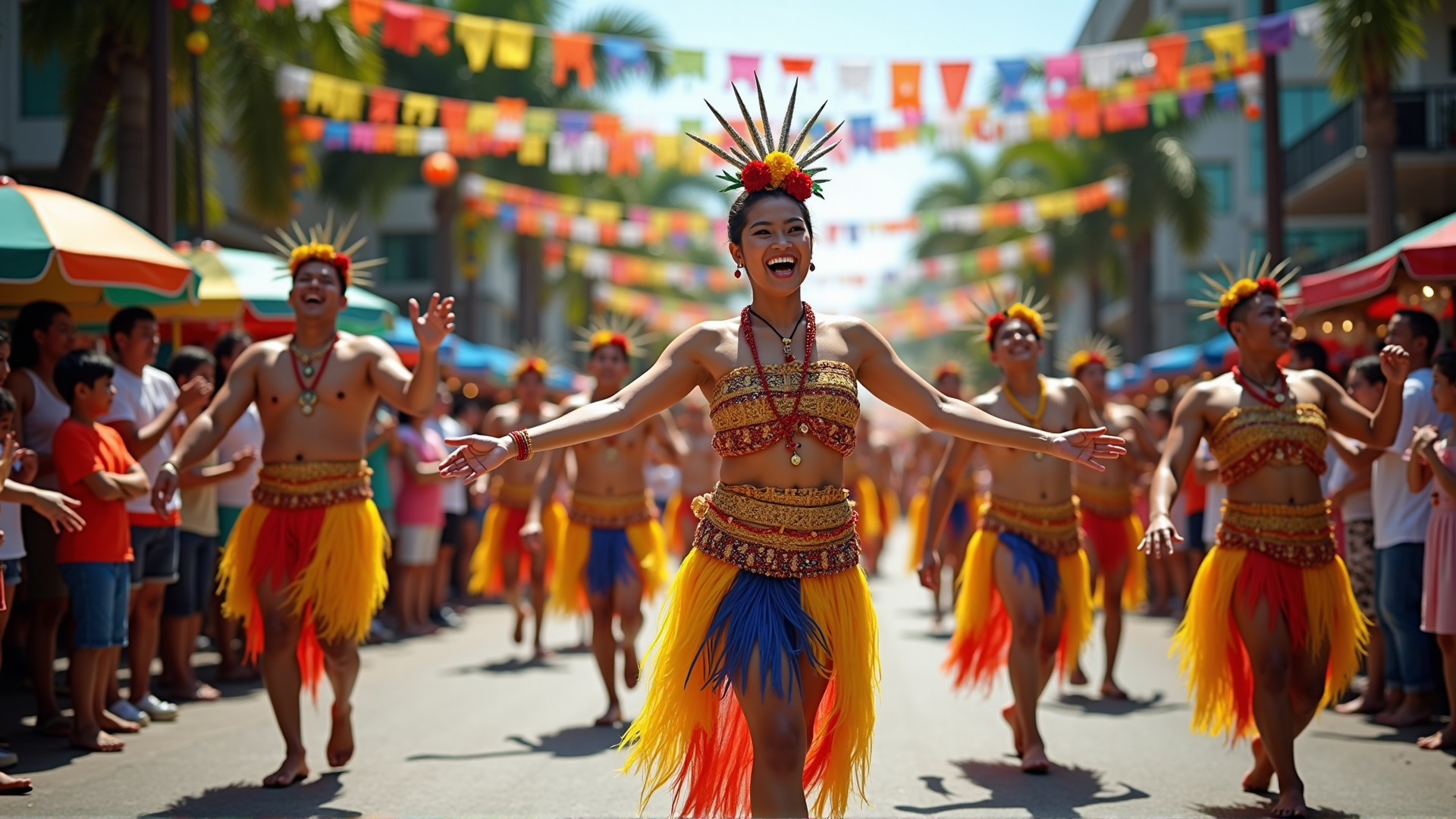The Philippines, an archipelago brimming with vibrant culture and history, offers a plethora of traditional festivals that captivate both locals and visitors alike. These festivals are a tapestry of the country’s diverse heritage, each celebrating unique aspects of community life, religious devotion, and agricultural abundance.
One of the most renowned celebrations is the Sinulog Festival, held every January in Cebu City. This event honors the Santo Niño, or the Child Jesus, combining religious solemnity with a lively street parade. Participants clad in colorful costumes perform the Sinulog dance, a rhythmic two-step forward, one-step backward movement that mimics the flow of Cebu’s Pahina River. The air is filled with the beat of drums and the spirited cheers of spectators, creating an electric atmosphere that draws millions each year.
In the northern Philippines, the Panagbenga Festival, or the Blooming Flowers Festival, is celebrated in Baguio City every February. Originally conceived to help the city rise from the devastation of the 1990 Luzon earthquake, it has blossomed into a spectacular month-long tribute to the beauty of flowers and the creativity of the local community. The festival is highlighted by a grand float parade featuring floral masterpieces and street dance performances that depict the growth and resilience of the people.
Traveling southward brings us to the Ati-Atihan Festival in Kalibo, Aklan, another January celebration that exemplifies the spirit of revelry in honor of the Santo Niño. Known as the "Mother of All Philippine Festivals," its name means "to be like Atis," referring to the indigenous Ati people. Participants, their bodies painted in black soot, don colorful tribal costumes and dance to the rhythm of indigenous drums. The festival blurs the lines between performers and spectators, as everyone is invited to join the spontaneous merriment in the streets.
For a sweet experience, the Pahiyas Festival in Lucban, Quezon, celebrated every May, showcases the province’s agricultural bounty. This event honors San Isidro Labrador, the patron saint of farmers. Residents adorn their homes with the freshest produce, colorful kiping (rice wafers), and elaborate displays that highlight the creativity and agricultural wealth of the community. As visitors wander through the vibrantly decorated streets, they are treated to a feast for the senses with delicious local foods and lively music.
Grinding forward in time to October, the MassKara Festival in Bacolod City offers an exhilarating mix of joyous celebration and artistic flair. Born out of hardship during the sugar crisis of the 1980s, the festival embodies the resilience and optimism of Bacolodnons. Participants wear smiling masks, symbolizing a positive outlook despite adversity, and take part in street dancing competitions, cultural shows, and other activities. The city comes alive with light, laughter, and music, embodying Bacolod’s reputation as the "City of Smiles."
These festivals represent the heart and soul of the Philippines, each reflecting the nation’s storytelling through dance, art, and culinary delights. They offer unforgettable experiences, inviting everyone to partake in the celebration, and to witness the enduring spirit of community and cultural pride. Exploring these vibrant festivities not only provides a glimpse into the country's rich traditions but also fosters a deeper appreciation of its people’s warmth and creativity.
